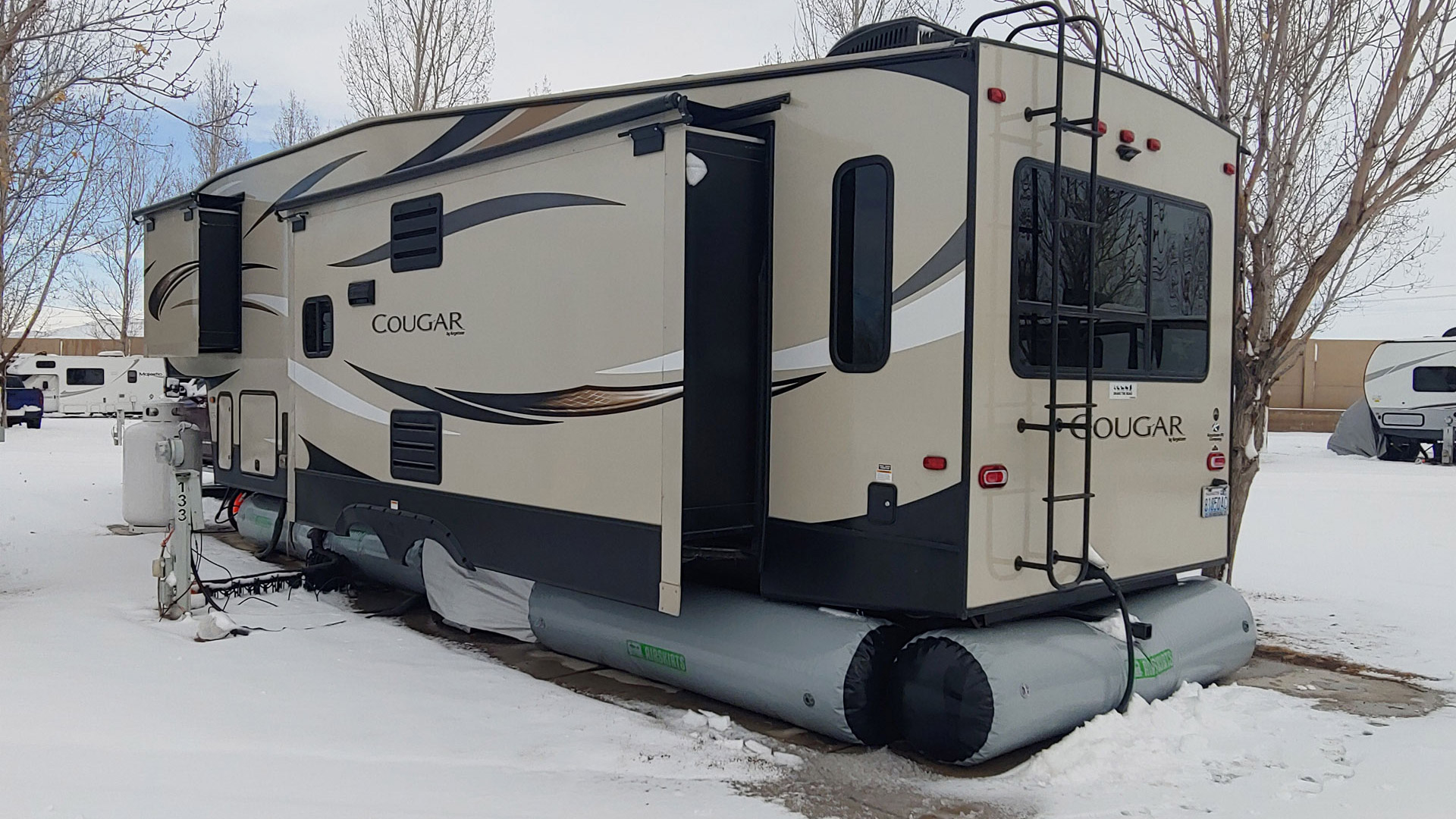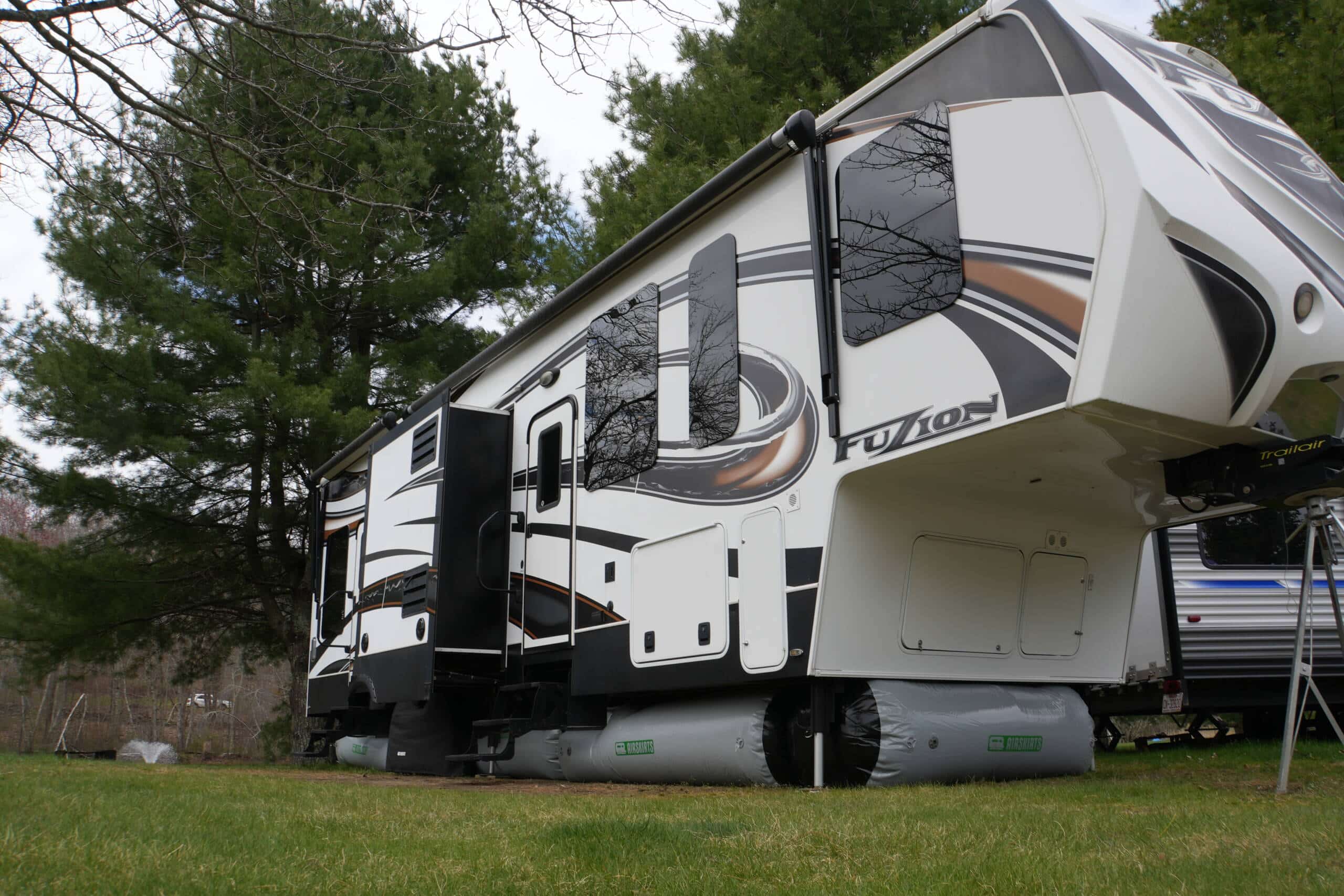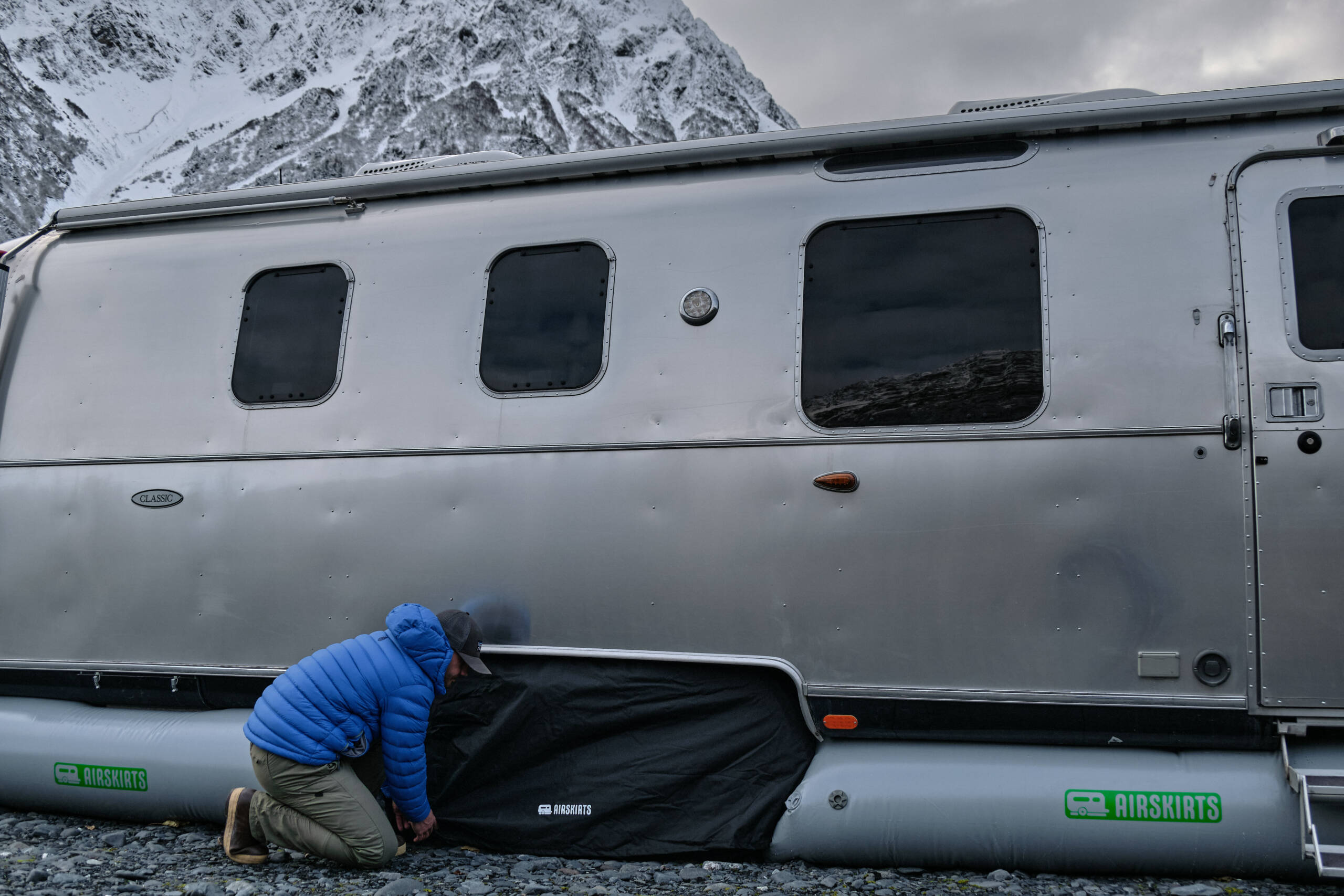AirSkirts – What They Are and How They Work
RV skirts have been used by RV owners for many years as a way to insulate and protect recreational vehicles. But the technology behind them has stagnated during this period. Fitting skirting can be a tiresome job that often requires holes to be drilled or tape to be attached. Storing is also tricky with large foam pieces taking up precious space within the RV.
There are newer solutions that are attempting to address these limitations. One such product devised by Jim Phelan called AirSkirts is looking to revolutionize the RV skirt market. During the course of this article, we will discuss why RV skirting is necessary, what problems it solves, and why AirSkirts are better than the competition.
The Heat Loss Problem
Cold and inclement weather can cause many problems for an RV. Keeping a recreational vehicle warm and protected from external factors is a difficult task. One method that many people turn to is RV skirting. Let’s have a look at the problems that RV skirting addresses.
Heat Loss through Flooring
In any property, whether it is mobile or static, heat can be lost in a variety of ways, including through the floor. According to homeheatproblems.com, up to 10% of heat is lost through the floor of a house. This is likely to be even more in an RV where the underside of the vehicle is open to the elements allowing warm air to literally blow away in the wind.
Piping Can Freeze
It is highly likely that the piping that feeds the plumbing of any RV runs at least in part underneath the vehicle (a diagram of plumbing and pipework configurations can be found at camperguide.org). In freezing conditions, pipes may freeze stopping the flow of water and preventing heating from working and faucets from providing water. On rare occasions, repeated freezing and unfreezing of pipes can cause them to crack or leak creating a problem that could cost a fair amount of money to fix.
Overworking of Furnace
A side effect of pipework freezing is the added stress it creates within the furnace of the RV. If your heating system is based on the flow of hot water, then frozen pipes may create immense heat pockets within the system that can lead to overheating of the furnace and a reduction in performance long term. Similarly, propane and electric heat sources will be overworked, causing unnecessary stress on the system in addition to wasted energy and money.
Less Energy Efficient
If heat is allowed to escape from an RV through the floor, heating the vehicle is likely to require more energy. More energy generally involves more cost to the owner and a greater toll on the environment.
Quite often the problems caused by floor heat loss are minor, but over time more serious issues can develop that may cause issues with the usability of the RV and are costly to remedy.
The Two Ways Heat Can Escape From an RV
The heat in any living space can escape in 2 different ways – convection and conduction.
Conduction
Conduction is where heat energy is transferred away from the RV through the walls, floor, roof or windows of the vehicle. If the outside of the vehicle is colder than the inside, heat will radiate away through external surfaces. While it is easy to insulate walls and ceilings, floors are a trickier prospect mainly because RVs have to be elevated to protect from surface water and provide adequate lift for the wheelbase. This elevation creates a space for cold air to penetrate which may see a large proportion of the heat generated inside the vehicle lost through the floor.
Convection
Convection is where heat is transferred away from the RV through gaps in doors, windows, flooring, walls, and ceilings. As hot air rises it will escape by any means necessary allowing cold air to enter through the same gaps. If the heat escapes through the floor of an RV it is swiftly blown away by air currents allowing colder air to enter.
The UK website BBC Bytesize have a great guide to how convection and conduction work. Check it out here.
How RV Skirts Help Resolve These Issues
RV skirts provide a way to prevent heat loss by creating a barrier to trap warm air underneath the vehicle and subsequently keep heat in and cold out. Skirting also helps stop cold air blowing underneath the RV and removing heat through convection and conduction.
RV skirts come in a variety of designs with different materials, styles, effectiveness, and durability depending on the design used.
Trapped Air is a Natural Insulator
Trapped air is a natural insulator and will raise the temperature within the floor cavity. In essence, the pocket of air acts like a sheet of insulation board found in homes. Cavity insulation works by creating layers of non-moving air within the material itself. RV skirting performs a similar function. By trapping warmer air outside your vehicle less heat is transferred through the floor which can help raise the temperature and reduce heat loss.
The Sweater Example
Have you ever felt chilly when you got up in the morning and grabbed a sweater or dressing gown to put on over your pajamas? Have you ever wondered why adding more layers of clothing helps keep you warm? Wearing more clothes has less to do with adding layers of material to your body and more to do with how these layers trap air around you.
Whenever you’re cold you grab the biggest, fluffiest woolen sweater you can find and wrap yourself in it. This might be placed over the top of a shirt you are already wearing. You may already have a vest underneath that. By adding more clothing you are in essence created multiple layers of trapped air between each garment. Each air layer acts as an insulator reducing both convection and conduction. The sweater itself adds another layer of trapped air within the fibers of the material itself, hence the reason why thicker, fluffier clothing keeps us warmer and more insulated from the cold.
RV skirting works in a similar way. It traps a layer of air underneath the RV that naturally insulates and protects.
The Problem With Traditional Skirting Options
Traditional RV skirting is generally composed of layers of polystyrene foam covered in a waterproof material that attaches to the vehicle via screws or Velcro taping. The problem with these systems are multiple and include:
- The foam pieces are generally large and unwieldy making them difficult to install and store.
- Fitting a traditional skirting solution normally involves sticking tape to the vehicle or drilling holes, neither of which are desirable for owners looking to keep their RV in pristine condition.
- The different parts of a foam-based skirting solution can be ill-fitting and prove less effective at preventing heat loss.
- Foam skirting is easily damaged and may need replacing regularly.
AirSkirts Are Different
AirSkirts are one of the newer RV skirting solutions on the market. They were created by Jim Phelan in early 2020 borne from his frustration with the skirting options available to him at the time. Fed up with wrestling with large, unwieldy Styrofoam and having to drill holes or attach tape to his prized RV, Jim created a design that required no tricky installation, was easy to store, fitted any vehicle with ease, and used materials that provide industry-leading insulation.
AirSkirts inflate under your RV and are held in place by the pressurized seal this creates. Installing AirSkirts is as simple as putting it into position and watching it expand using the electrical pump included with the kit. Extra protection is provided by a system of tubes and tire wedges that create a completely sealed perimeter that keeps wind and other weather conditions out.
The seal created by an inflated AirSkirts system prevents cold air from entering the underside of an RV and penetrating the vehicle through the floor. By inflating to fit the underside of your vehicle perfectly, AirSkirts creates a complete and total barrier that outside elements cannot penetrate. This barrier helps prevent convection and conduction by stopping cold air from cooling the underside of the RV and warm air from escaping through gaps or holes in the floor.
Breaking down AirSkirts is also easier using the same pump used to inflate the system. This can be reversed to return AirSkirts to its original size. The deflated size of an AirSkirts system is smaller than other skirting options and it can often be easily tucked away in smaller nooks or crannies until it is time to use it again.
In Summary
Keeping an RV warm is a mammoth task. Heat can escape in a variety of ways through convection and conduction, including through the floors. RV skirting is an effective way to prevent heat loss from a vehicle. But traditional options come with their own problems, such as difficulties with installation and storing, and potential damage to the vehicle.
AirSkirts address these issues by being a completely inflatable solution. It creates a barrier that traps warm air underneath the RV and keeps cold air out. It is easier to use and store than more traditional skirting options and provides a more effective solution to protecting against heat and energy loss.






Leave A Comment